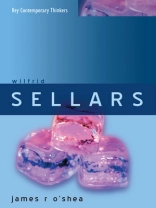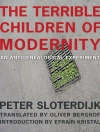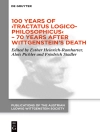The work of the American philosopher Wilfrid Sellars continues to
have a significant impact on the contemporary philosophical scene.
His writings have influenced major thinkers such as Rorty,
Mc Dowell, Brandom, and Dennett, and many of Sellars basic
conceptions, such as the logical space of reasons, the myth of the
given, and the manifest and scientific images, have become standard
philosophical terms. Often, however, recent uses of these terms do
not reflect the richness or the true sense of Sellars original
ideas. This book gets to the heart of Sellars philosophy and
provides students with a comprehensive critical introduction to his
lifes work.
The book is structured around what Sellars himself regarded as
the philosophers overarching task: to achieve a coherent vision of
reality that will finally overcome the continuing clashes between
the world as common sense takes it to be and the world as science
reveals it to be. It provides a clear analysis of Sellars
groundbreaking philosophy of mind, his novel theory of
consciousness, his defense of scientific realism, and his
thoroughgoing naturalism with a normative turn. Providing a lively
examination of Sellars work through the central problem of what it
means to be a human being in a scientific world, this book will be
a valuable resource for all students of philosophy.
Innehållsförteckning
Preface ix
Acknowledgements xii
Introduction 1
1 The Philosophical Quest and the Clash of the Images
10
The quest for a stereoscopic fusion of the manifest and
scientific images 10
The clash of the images and the status of the sensible qualities
14
Sensing, thinking, and willing: persons as complex physical
systems? 17
2 Scientific Realism and the Scientific Image 23
Empiricist approaches to the interpretation of scientific
theories 24
Sellars’ critique of empiricism and his defense of
scientific realism 32
The ontological primacy of the scientific image 41
3 Meaning and Abstract Entities 48
Approaching thought through language: is meaning a relation?
49
Sellars’ alternative functional role conception of meaning
55
The problem of abstract entities: introducing Sellars’
nominalism 63
Abstract entities: problems and prospects for the metalinguistic
account 69
4 Thought, Language, and the Myth of Genius Jones 77
Meaning and pattern-governed linguistic behavior 77
Bedrock uniformity and rule-following normativity in the space
of meanings 83
Our Rylean ancestors and genius Jones’s theory of inner
thoughts 86
Privileged access and other issues in Sellers’ account of
thinking 97
5 Knowledge, Immediate Experience, and the Myth of the Given
106
The idea of the given and the case of sense-datum theories
107
Toward Sellers’ account of perception and appearance
118
Epistemic principles and the holistic structure of our knowledge
125
Genius Jones, Act Two: the intrinsic character of our sensory
experiences 136
6 Truth, Picturing, and Ultimate Ontology 143
Truth as semantic assertibility and truth as correspondence
144
Picturing, linguistic representation, and reference 147
Truth, conceptual change, and the ideal scientific image 158
The ontology of sensory consciousness and absolute processes
163
7 A Synoptic Vision: Sellers’ Naturalism with a
Normative Turn 176
The structure of Sellers’ normative ’Copernican
revolution’ 176
Intentions, volitions, and the moral point of view 178
Persons in the synoptic vision 185
Notes 191
Bibliography 228
Index 243
Om författaren
James O’Shea, Lecturer in Philosophy, University College, Dublin












